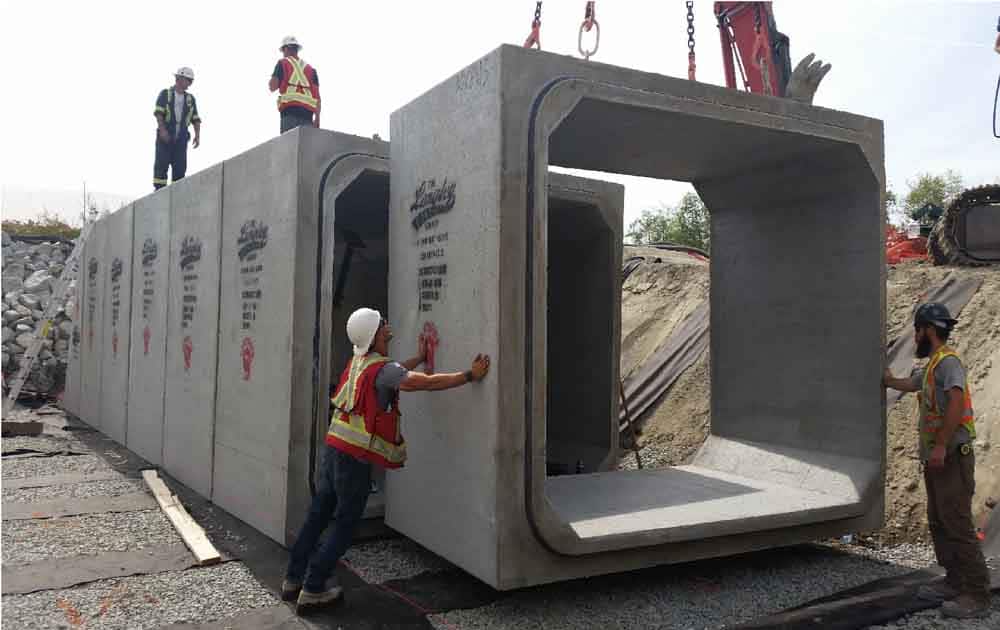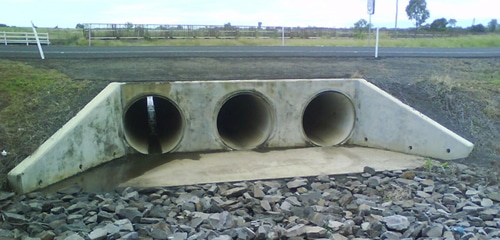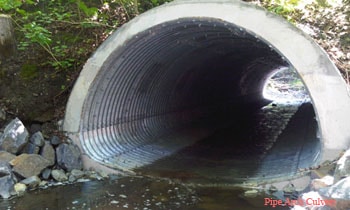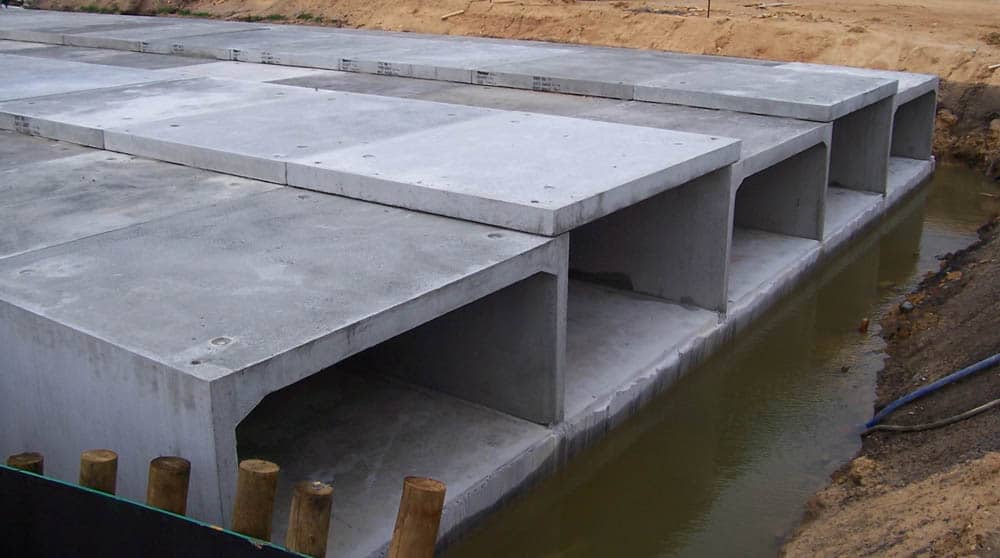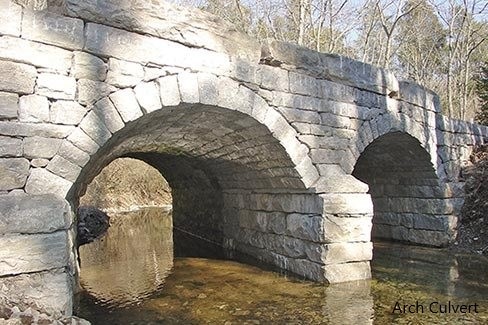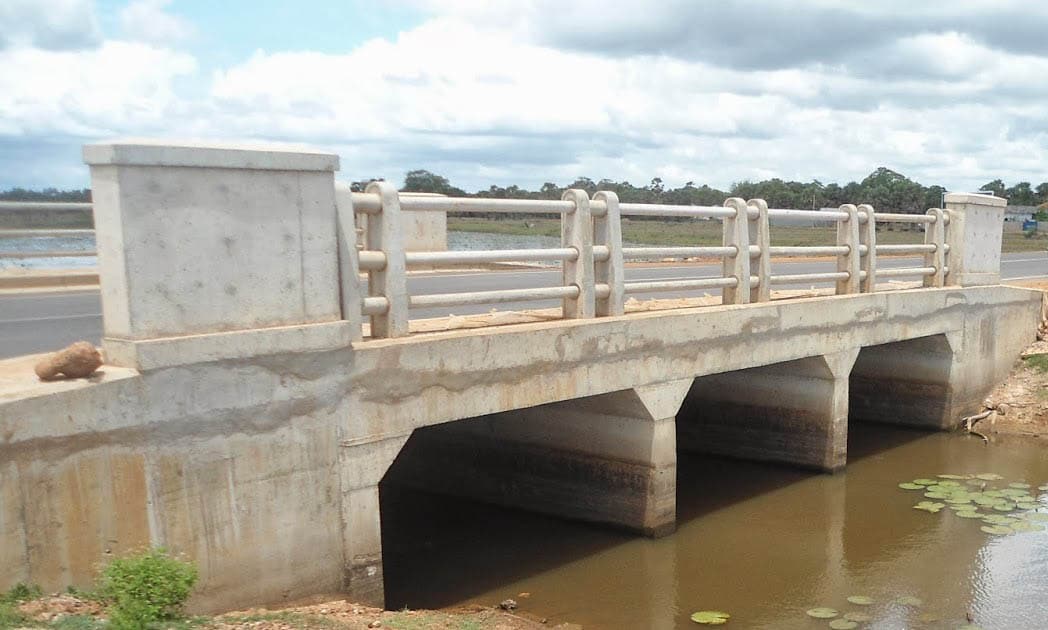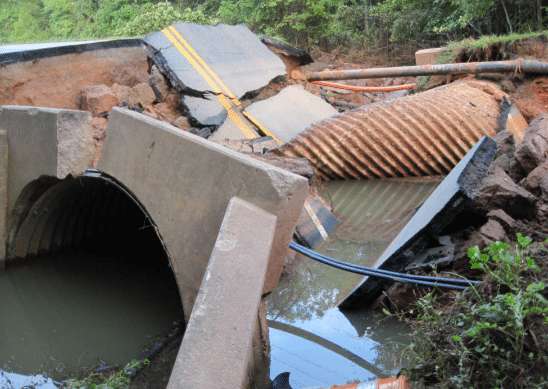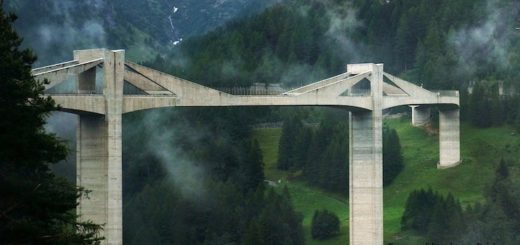Culvert [types, design aspects, failures]
Culvert is a structure that provides the facility to cross the stream or chanal while allowing the water to flow through it. Depending on the location, as per the structural capacity, availability of construction materials, etc, the type of culver to be constructed will be selected.
The following materials/type are used in construction.
- Cast-in-situ Concrete
- Precast Concrete
- Steel
- Aluminum
- Plastics
Out of the above material list, cast-in-situ or precast concrete culverts are more common. When there is no heavy equipment, etc, mostly it could be cast-in-situ concrete as lifting is required if we make it precast.
Culvert is constructed when the span of the structure is relatively smaller or the width of the channel is smaller. Since they are constructed on the ground or improved ground, the condition of the ground should be in good condition or it should be able to improve.
If the ground condition is soft, there will be a settlement issue.
Types of Culverts
Mainly there are the following types of culverts constructed allowing movement of the water and traffic.
- Pipe Culvert
- Pipe Arch Culvert
- Box Culvert
- Arch Culvert
- Bridge Culvert
Let’s discuss all the types of culverts in detail.
Pipe Culvert
Pipe culvert is constructed using culvert pipes. There are specially made from pipes that can be used for the construction of this nature.
The diameter of the culvert pipe is selected based on the discharged to be passed through the pipes.
When the discharges are high, the number of pipes can be increased.
However, there are limitations in these types of construction as pipe culvert can allow to move limited discharge. If the discharge is high, these structures may not be suitable.
When we place the pipes, the total effective area that allows the movement of water is limited.
The gap between the pipes can be filled with mass concrete, compacted soil, compacted query dust, compared ABC, etc. materials to allow the movement of vehicles across the pipe culvert.
The pipes placed for the culvert should be able to withstand loads applied from the vehicles when there is no adequate gap between the pipe top-level to the rood finished level.
When there is an adequate height between pipe top-level and road top-level, parts of loads applied on the road will transfer through the compacted soil between the pipe from the arching action.
These actions need to be considered during the design of pipes and the pipe culvert bridge.
Whether there is compared fill or other material between the pipes or any other material, ends of the pipes are finished like a concrete bridge commonly. However, there are occasions of placing the pipe without any finish.
Culvert pipe could be concrete, steel, or any other material as discussed above.
Pipe Arch Culvert
A pipe arch culvert is a combination of one or several pipe arches.
These are arches are made from pipes that could be manufactured from concrete or steel.
Most of the arch culverts transfer the loads from the filling and the vehicles from the arching action. In such situations, much load will not be applied to the arch.
However, it shall be decided during the desing of the pipe arch culvert.
Arch could be a combination of one or two materials. As indicated in the above figure, the steel framework is combined with concrete.
Box Culvert
The most widely constructed types of culverts are the box culvert.
Box culvert is a rectangular shape reinforced concrete structure consists of single or multiple boxes allowing movement of water and traffic.
As per the nature of the structure the following components included in a box culvert.
- Top Slab
It is the structural element that allows the movement of the vehicles. It is a reinforced concrete slab.
Normally asphalt is placed on the top of the slab to make the continuation of the road.
And top slab is desing for bending and shear forces generated by applied loads.
- Side Walls
They carry the vertical loads and bending moments induced by the top slab.
- Bottom Slab
It acts as the foundation of the box culvert and it is designed for bending and shear forces due to the applied loads.
Before the construction of the box culvert, the condition of the ground is checked through the borehole investigation. The base slab shall be placed on a ground having the required bearing capacity to avoid the settlement of the culvert. When there is no adequate bearing capacity, the ground improvement could be done as recommended by the geotechnical investigation team.
Box culvert can be constructed anywhere when applicable in the sense of span and ground conditions. It can be desing to any vertical or lateral load applied to it.
Box culvert shall be designed for different load combinations as there will be loads from all the sides of the structure. The following types of loads that include types of lateral loads are to be applied to a box culvert when designing.
- Loads form the vehicle on the top slab. Uniformly distributed loads and points load due to the movement of vehicles shall be considered for the design. The article types of loads on bridges could be referred for further information.
- Lateral loads applied on the walls from the soil shall be considered for the desing. Earth pressure due to the surcharged loads and its own weight shall be considered during the desing with relevant load combinations.
- Desing based slab shall be desing for the soil pressure applied on the base.
All applied load shall be combined with relevant load combinations.
Arch Culvert
As the name implies, it is an arch and arching action transfer the loads applied on the bridge.
This is the eldest type of culvert that constructed across the channels, steams, even over rivers.
One or more arches are combined to create the arch culvert. There are arch bridges constructed using the same architecture but on a large scale. The article’s different types of bridges could be referred to for more information.
As indicated in the above figure, there is a beam element along the curve to carry the loads. The beam could be a masonry beam or concrete beam along curved to carry the load to the foundation.
Most of the old arch culverts are masonry structures.
Bridge Culvert
Bridge culvert is a further development of a box culvert.
When we need not construct the base it becomes a bridge-type culvert.
Further, when the condition of the ground is not that good, using a base slab is also not useful. In addition, it could be required to construct a different foundation such as a driven pile foundation, cast-in-situ pile foundations, etc. when it is recommended by the soil investigation report.
The application of loads is the same as we discussed under the box culvert. The bridge should be desing for the vertical and horizontal loads.
Culvert Failures
The reasons that could affect the failures are discussed as follows.
- Material Failures
The materials such as steel are not long-lasting if regular maintenance work is not carried out. Corrosion of steel is the main cause of its failures.
When designing these types of structures, some allowance is made by increasing the thickness of the pipe. For example, we increase the thickness of the pipe by 1mm than it is required by the design. These values may vary from standard to standard.
- Erosion
Erosion around the culver or adjoining area could lead to failure of the culverts.
When the area around it is eroded, part of the structure will settle leading unbalance conditions. As a result, the structure could fail.
- Excessive Settlements
The excessive settlement could cause if the condition of the ground is not properly assessed during the desing.
Arch type structures are a combination of several material or actions to withstand itself. The excessive settlement could lead to separate these materials and it could cause the failure of the whole system.
- Excessive Loads
Excessive loads applied to the culvert could lead to failures. It could be a wrong estimation of loads during the desing stage.
In addition, there could be movement of vehicles when restrictions are made of the weights.

